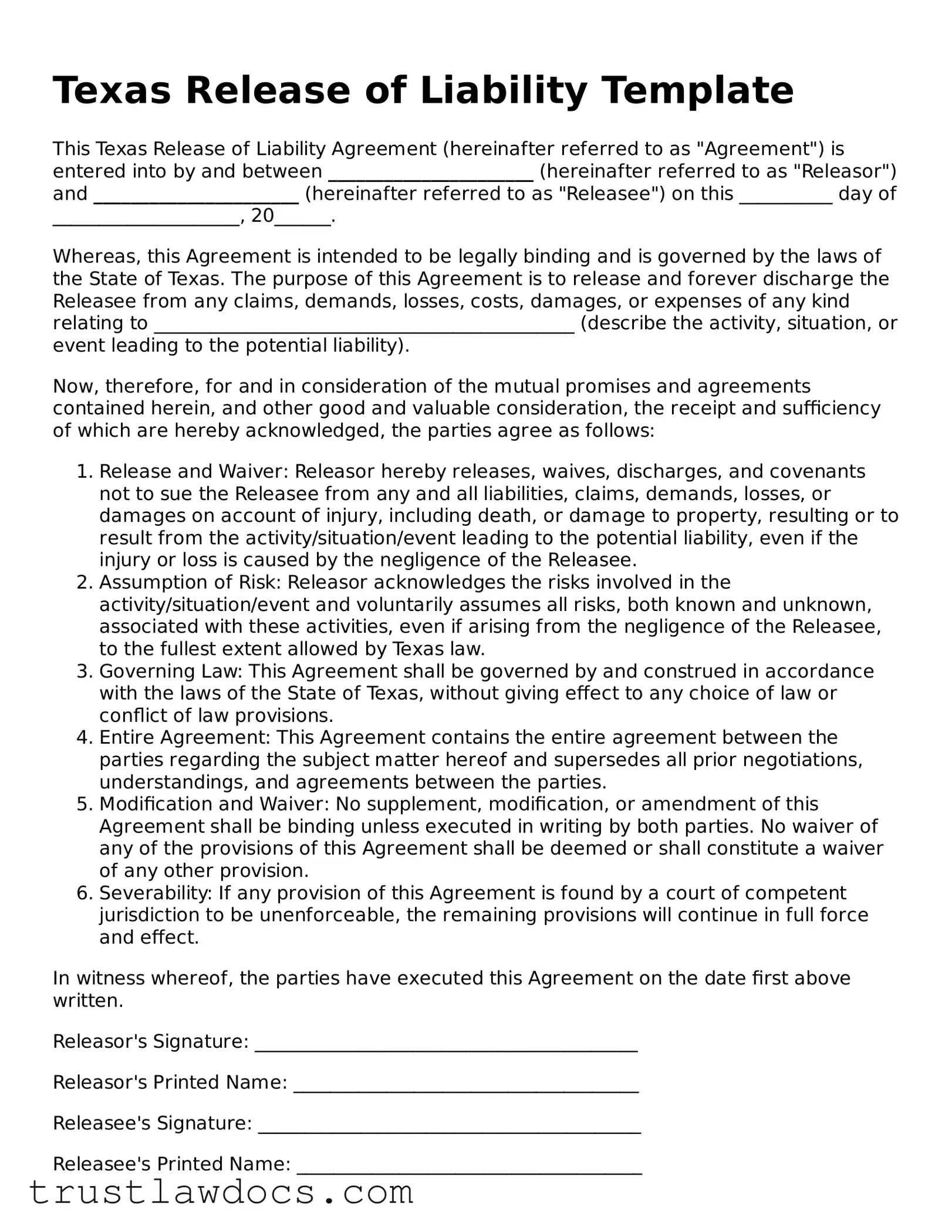What is a Texas Release of Liability form?
A Texas Release of Liability form is a legal document that individuals sign to waive their rights to bring a lawsuit against another party for certain incidents. It is often used in situations where risks are involved, such as sports events, recreational activities, or even in the sale of goods and services to prevent future legal claims if something goes wrong.
When should a Texas Release of Liability form be used?
This form should be used before participating in any activity or event that carries a risk of injury or damage. It is also commonly used in transactions involving the sale of items, where the seller wishes to limit their liability for any issues that might arise with the item after the sale.
Is a Texas Release of Liability form legally binding?
Yes, if it is properly drafted, clearly understood and agreed upon by all parties, and does not include waivers for situations that cannot legally be waived, such as intentional misconduct or gross negligence, it is considered legally binding in Texas.
How can one ensure that a Texas Release of Liability form is legally enforceable?
To ensure enforceability, make sure the form is clearly written, outlines the specific risks involved, and is signed voluntarily by all parties. Using clear, concise language and having the document reviewed by a legal professional can also help ensure it meets all legal requirements.
What information needs to be included in a Texas Release of Liability form?
The form should include detailed information about the parties involved, the nature of the activity or transaction, a clear description of the risks associated, and a statement where the signing party agrees to not hold the other party liable. Contact information and the date of the agreement are also essential.
Can a minor sign a Texas Release of Liability form?
Minors cannot legally enter into contracts, including a Release of Liability. Their legal guardians or parents need to sign on their behalf for the document to be considered valid.
What happens if a Texas Release of Liability form is not signed?
Without a signed Release of Liability, the potential for legal claims remains. If an incident occurs that results in injury or damage, the party that would have been protected by the release may be held legally responsible in a lawsuit.
Can a signed Texas Release of Liability form be revoked?
Once signed, revoking a Release of Liability form is challenging. Generally, if all parties agreed to the terms voluntarily and understood them fully, the document is irrevocable. However, if there was fraud, coercion, or misunderstanding involved in the signing, there might be grounds for revocation. Legal advice should be sought in such situations.
